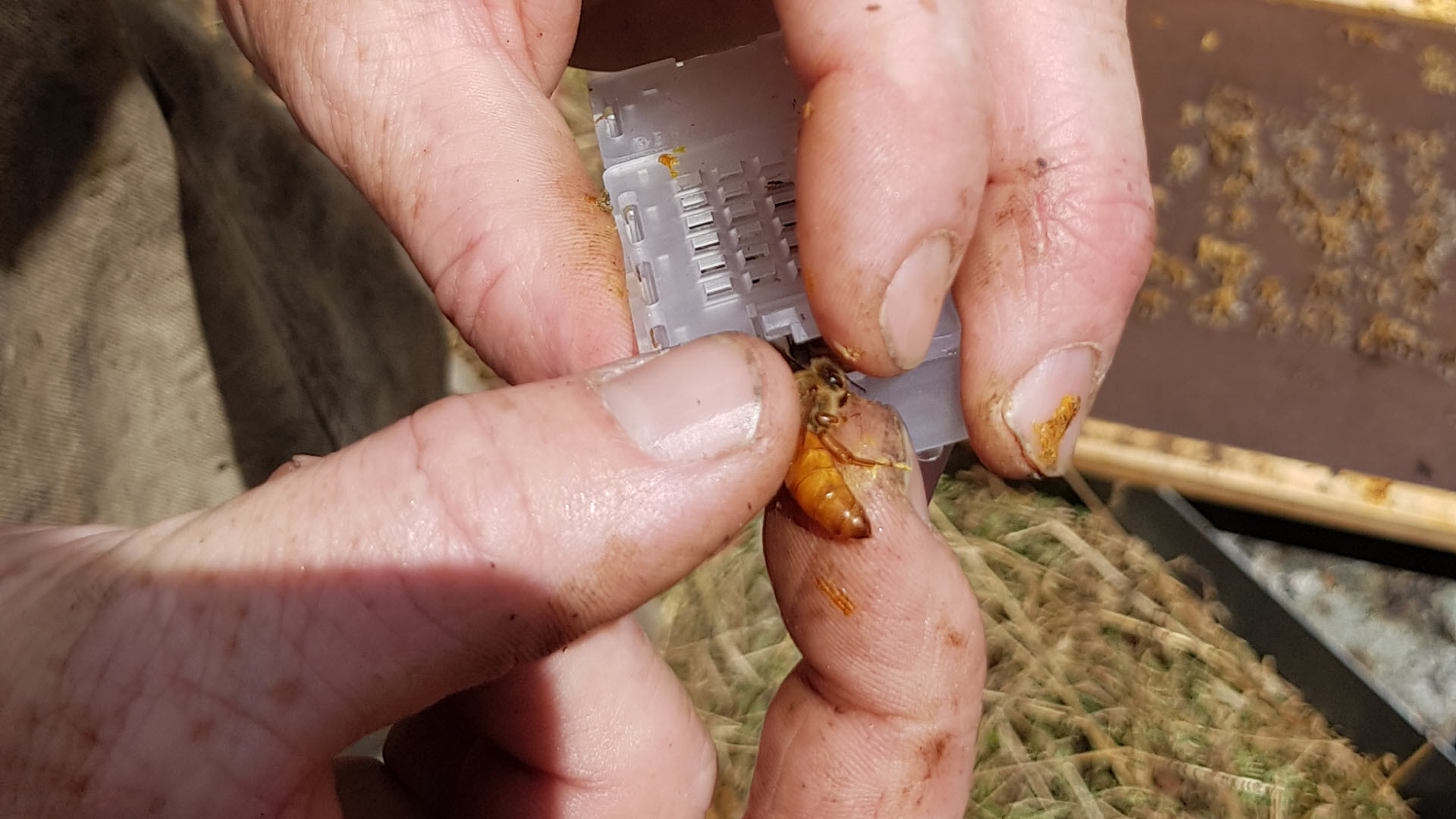
There are a number of steps in determining whether your queen honey bee is of high quality and is going to do a good job for your hive. Before you even begin to look at the queen bee itself there is a lot of work that needs to go into your breeding program or purchase decision.
In order to produce a quality queen bee, you or your breeder needs to have a well organised system based on a minimum of 400 hive units. Essentially good bee breeders work on a pyramid pattern. A large numbers of field hives that are worked and monitored to develop superior bee hives and queen bees. These queens are used as drone supply hives from which the top performing hives are bred from.
We work with 600 field hives at the bottom of the pyramid, approximately 50 of which are drone supply hives. 15 to 20 hives are actively monitored for breeders at any given time (generally only 4 or 5 actually being grafted from).
In order to ensure that there is sufficient genetic diversity new stock from other queen bee breeders/beekeepers should be regularly brought into the system. Ideally this is introduced into the field hive population for monitoring. Queen bees and hives with desirable traits can be moved up into drone supply. We personally never graft from anything other than our own queen bees preferring to bring the diversity through subsequent generations through drones with desirable traits.
Clearly if you are looking at running an effective breeding program or buying from a breeder there are a few questions to be asked before committing your hive resources or money.
That said, what will tell you whether the queen bee that you have is a quality, high performing, queen bee or not? Below are some ideal queen bee traits (some visible only through their progeny):
- Colour. Due to the closed nature of New Zealand’s queen bee market it is impossible to import new ‘races’ or stock of semen or queen bees from overseas. Most breeders work hard to get their queen bees to conform to either Italian or Carnolian colour traits. Largely this is an asthetic consideration as most beekeepers are more interested in performance and traits listed below.
- Laying pattern. Queen bees should lay in large areas of eggs/grubs that are of the same or very similar age. They should be quick to move onto new, drawn, clean frames and lay them up quickly during the season. It should be noted that gaps in brood may occur where the frames are old or the queen bee is just beginning to lay or running out of steam at the end of its life.
- Quick to build up and shut down. As spring progresses and the weather warms it is important for the queen bee to increase their laying quickly in an organised way. This can be particularly important for beekeepers who do pollination work. Similarly once the season begins to cool and move through Autumn into winter queen bees should begin to slow their laying down to minimise hive populations
- Movement. A well mated queen bee should move smoothly not jerkily across the frame and be fairly settled.
- Shape and size. In general queen bees should be 1 ½ to 2 times as long as a worker bee. It should be noted that if they have been in a cage for a while queen bees tend to shrink up when not laying and can take a short while to ‘pump up’ again.
There are also a number of desirable traits that are expressed and visible through the progeny.
- Active but not aggressive. Worker honey bees should be active on the frame and quick to fly foraging once temperature warms however not aggressive when hives are opened.
- Hygenic behavior. Hives should be free of debris and have damaged brood removed rapidly by the workers. This can be tested by hygiene testing.
- Good winter clustering. Once the temperature decreases and winter
begins worker bees must cluster on brood to maintain temperature and keep themselves and the larvae alive. - Honey production. For most beekeepers the bulk of their income comes from producing honey. If all other traits are satisfactory in their queen bees it should flow through to good strong hives, healthy honey bees, and therefore good, large honey crops.
Whether you are producing your own queen bees or buying all or some of them in from breeders there are a number of important aspects to consider. The queen bee is the motor that drives your hive. The queen bees quality and performance is integral to the health and productivity of your hive and ultimately your business or hobby.

